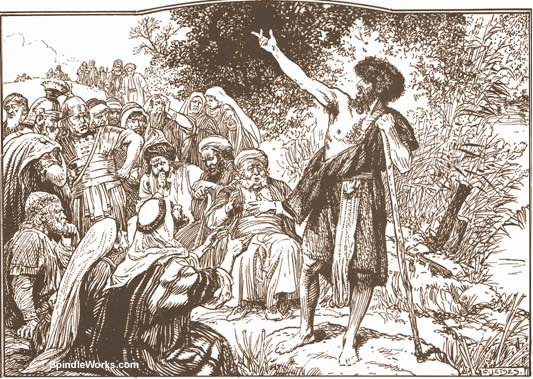Radiocarbon Dating Devices Aim At John The Baptist's Bones
Modern science is certainly a wonderful thing, especially when it helps us figure out if some ancient relics are, in fact, the bones of the legendary John the Baptist. Study researcher Thomas Higham of the University of Oxford told LiveScience this week that the artifacts they're testing this week are indeed very interesting, if not the genuine article. The bones in question are being tested with radiocarbon dating and have been found in a church in Bulgaria bearing the name St. John, with another box near it showing the name of a famous relic courier.
This set of bones was actually recovered in the year 2010 by a set of Romanian archeologists by the names Kazimir Popkonstantinov and Rossina Kostova. They were excavating a rather old church site on the island of Sveti Ivan, it having been originally constructed just a bit in the fifth century and completed in the sixth. Under the site of the original altar for the church sat a marble sarcophagus with a total of nine bones inside.
UPDATE: To be clear, the translation on the box referred to St. John the Baptist; a Saint though his name often does not include such a descriptor in modern Bible lore. Also the date included on the box (noted below) was June 24th, aka the feast of John the Baptist.
Twenty inches away from the first box sat another made of volcanic rock, this one with an inscription which said, after translation, "Dear Lord, please help your servant Thomas", in addition to the name St. John and the date of the official day of celebration for that saint. Scientists here in 2012 have brought on a set of tests that will lend information leading to the true identification of said bones.
"We got some dates that are very interesting indeed. They suggest that the human bone is all from the same person, it's from a male, and it has a very high likelihood of an origin in the Near East." – Higham

These researchers have thus far, first of all, identified six of the bones as being human, with the other three coming from three different animals: one sheep, one cow, and one horse. Different scientific tests were needed to identify the different human bones, with a single knucklebone being the only one with enough collagen to perform radiocarbon dating. With this test, the bones have been dated back to the early first century – this puts the set (or at least the knuckle) in with the time of the New Testament as well as the dates in which John the Baptist lived according to Jewish histories.
Three of the other bones were able to have their former DNA reconstructed, with the results being that all three came from the same person. Study researcher Hannes Schroeder, formerly of Oxford, added in a statement:
"Our worry was that the remains might have been contaminated with modern DNA. However, the DNA we found in the samples showed damage patterns that are characteristic of ancient DNA, which gave us confidence in the results. Further, it seems somewhat unlikely that all three samples would yield the same sequence considering that they had probably been handled by different people. Both of these facts suggest that the DNA we sequenced was actually authentic." – Schroeder
So what we've got is a box filled with a set of bones which is marked with the name St. John, aka John the Baptist. Carbon dating as well as DNA reconstruction suggest that the bones could indeed have been from that particular historical figure. The strangest part of the puzzle, however, remains the animal bones. Not that they're in the box, as padding a small reliquary with non-authentic bones was a common practice back in those grotesque days, but because of their age: the animal bones were found to be about 400 years older than the human bones.
Hit the timeline below to see all of the most interesting bone-related science bits we've got to offer here in the recent past on SlashGear!
